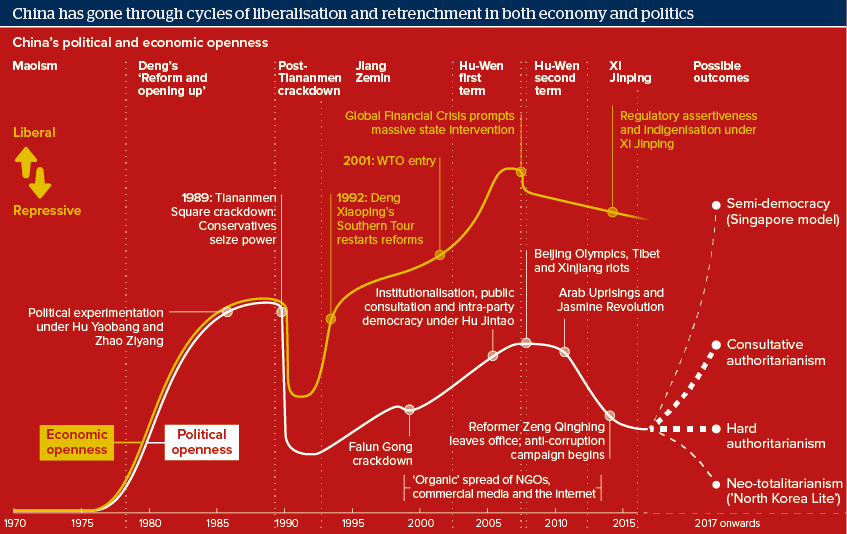China reaches political crossroads as economy matures
The balance China has traditionally struck between economic openness and political repression may not hold much longer

Source: Oxford Analytica; China’s Future, David Shambaugh, 2016
Outlook
Economic growth and political repression, the pillars of Communist Party rule, are in tension. The Party strives for an optimum balance that maximises economic openness without weakening its political control. However, the terms of the trade-off may soon change as the economy develops to the point where innovation becomes the primary driver of growth; at this point, the cost of political repression in foregone economic potential may rise.
The leadership may then face a choice between political liberalisation and economic stagnation, both risky: economic stagnation would undermine the state's 'performance legitimacy' and erode its repressive capabilities, while political liberalisation could get 'out of control' if it creates space for more powerful oppositional forces than the Party is willing to tolerate.
Impacts
- Innovation requires critical thinking and exchange of information and ideas, which censorship, propaganda and indoctrination will impede.
- The Party will willingly sacrifice some growth for the sake of political control; the question is how far this can go before backfiring.
- The next Politburo reshuffle in 2017 could offer an opening to steer back towards a more liberal course.
- The early 2000s provide a precedent for a more liberal politics; the late 1980s provide a warning against loosening controls too much.